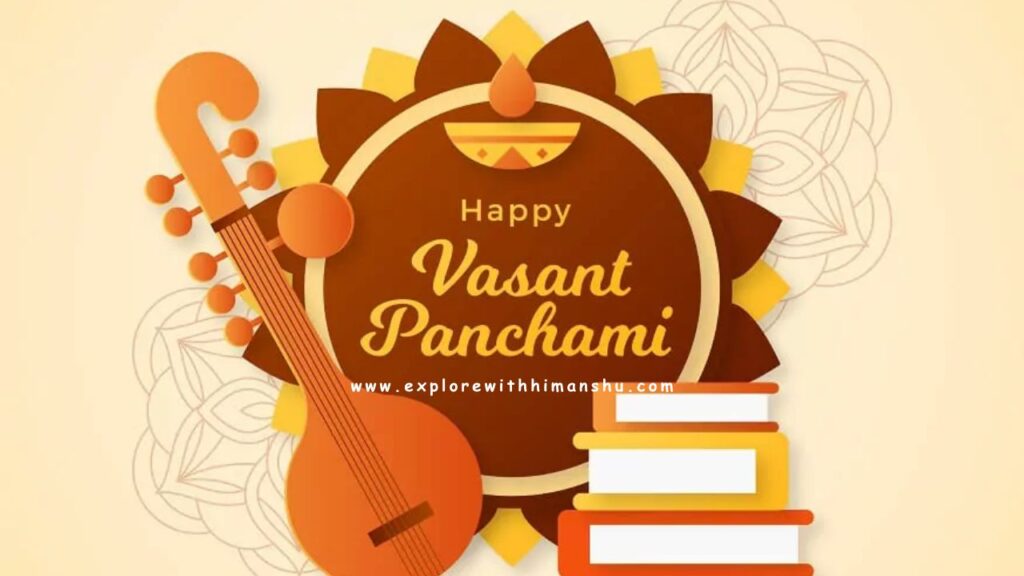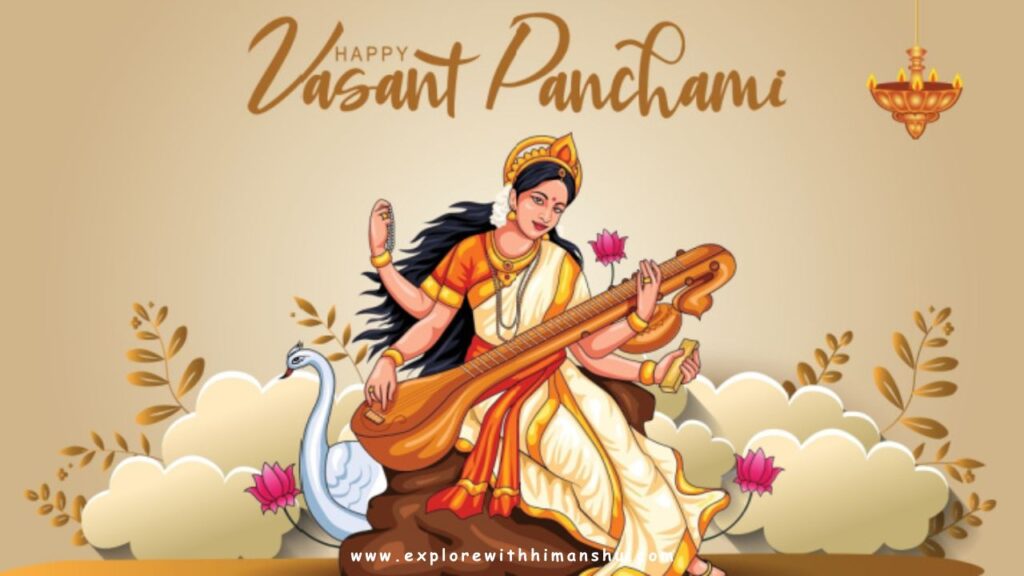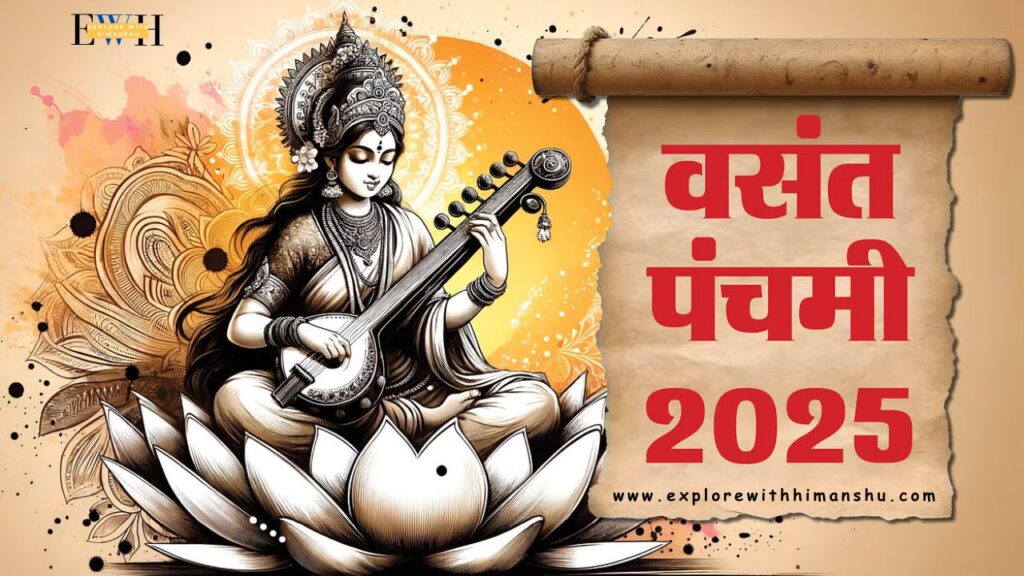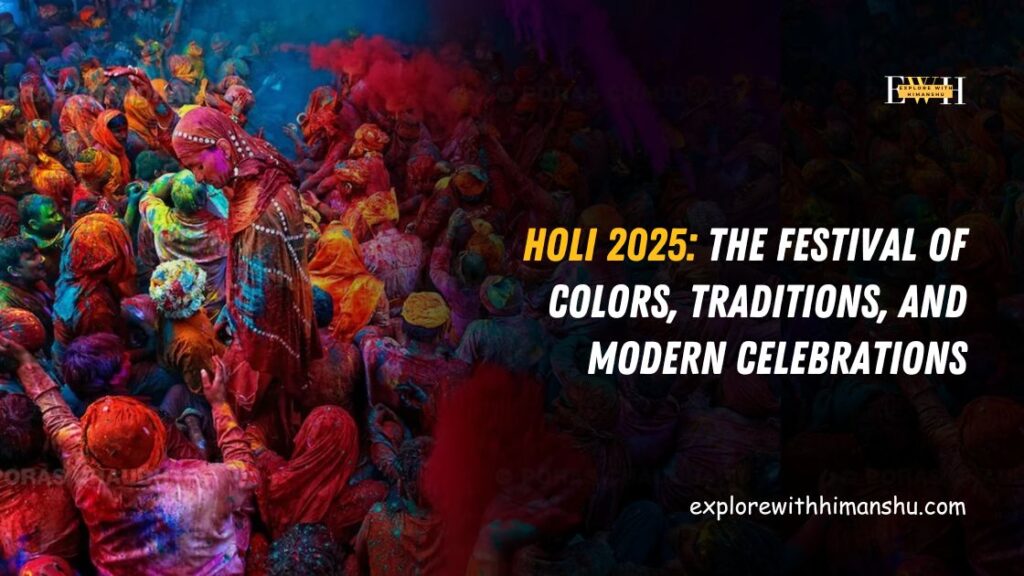Vasant Panchami is one of the most vibrant and spiritually significant festivals celebrated in India. Marking the arrival of spring, this auspicious occasion is dedicated to Goddess Saraswati, the deity of wisdom, learning, music, and arts. The festival is observed with great enthusiasm across different parts of India and even in some neighboring countries. With the sky adorned with colorful kites, the fields glowing with yellow mustard flowers, and devotees offering prayers for knowledge and enlightenment, Vasant Panchami is a festival that resonates with renewal, prosperity, and joy.

The Significance of Vasant Panchami
The festival of Vasant Panchami falls on the fifth day (Panchami) of the Hindu lunar month of Magha, which usually corresponds to late January or early February. ‘Vasant’ means ‘spring,’ and ‘Panchami’ refers to the fifth day. This festival marks the end of winter and the beginning of warmer days, symbolizing growth, new beginnings, and creativity.
The primary spiritual significance of Vasant Panchami is the worship of Goddess Saraswati. She is regarded as the epitome of wisdom, intellect, and art. Devotees, especially students, artists, and scholars, seek her blessings for enhanced knowledge and creative abilities. Educational institutions hold special Saraswati pujas, where students place their books and musical instruments near the goddess’s idol, praying for wisdom and academic success.
Why is Yellow the Color of Vasant Panchami?
One of the most striking features of Vasant Panchami is the predominance of the color yellow. The color represents energy, prosperity, and the brilliance of nature. It is associated with mustard fields that bloom during this time, painting the landscape with a golden hue.
People wear yellow clothes, prepare yellow-colored sweets like ‘kesari halwa’ and ‘sweet saffron rice,’ and even offer yellow flowers to Goddess Saraswati. The color signifies optimism and the renewal of life, aligning with the essence of spring’s arrival.
Rituals and Traditions of Vasant Panchami
Vasant Panchami is celebrated with unique rituals and customs that vary across different regions of India. Some of the key traditions include:
1. Saraswati Puja
Devotees offer prayers to Goddess Saraswati, seeking wisdom and enlightenment. Schools, colleges, and homes set up idols or pictures of the goddess, adorned with yellow flowers. The offerings typically include sweets, fruits, and betel leaves.
In West Bengal, Odisha, and Bihar, grand Saraswati Puja celebrations take place. Children are encouraged to write their first letters on this auspicious day, marking their initiation into the world of learning.
2. Kite Flying
In northern India, particularly in Punjab, Haryana, and Rajasthan, kite flying is an integral part of Vasant Panchami celebrations. People take to rooftops, flying colorful kites in friendly competitions. The sight of kites soaring in the bright blue sky signifies freedom, joy, and the boundless opportunities that knowledge brings.
3. Special Food Preparations
No Indian festival is complete without a delightful spread of food. Vasant Panchami is marked by the preparation of traditional dishes like ‘kesari halwa,’ ‘sweet saffron rice,’ ‘boondi ladoo,’ and ‘makki ki roti with sarson ka saag.’ These dishes not only enhance the festive spirit but also symbolize the prosperity and warmth that spring brings.
4. Wearing Yellow Attire
Men, women, and children dress in yellow garments, symbolizing positivity and energy. Schools and institutions encourage students to wear yellow, and even temples are decorated with yellow flowers and drapes.
5. Flying Kites
In many parts of North India, especially in Punjab, Delhi, and Uttar Pradesh, kite flying is a major highlight of Vasant Panchami. It is seen as a way to enjoy the pleasant weather and mark the arrival of spring.

Regional Celebrations of Vasant Panchami
The festival is celebrated in different ways across various regions of India. Let’s take a look at how different states mark this special occasion:
1. West Bengal and Odisha: Saraswati Puja
In states like West Bengal, Odisha, and Bihar, Vasant Panchami is synonymous with Saraswati Puja. The festival is grandly celebrated in educational institutions, homes, and temples. Young children often participate in ‘Hate Khori,’ where they write their first letters under the guidance of elders and priests.
2. Punjab: Kite Flying Extravaganza
In Punjab, Vasant Panchami is celebrated with enthusiasm, marked by vibrant kite-flying competitions. The festival is also an occasion for farmers to rejoice, as it signals the end of winter and the upcoming harvest season.
3. Rajasthan and Gujarat: Fairs and Cultural Events
In Rajasthan and Gujarat, people organize fairs, cultural programs, and music concerts to celebrate the festival. Women wear traditional yellow sarees, and families prepare special sweets to mark the occasion.
4. Maharashtra and Madhya Pradesh: Social Gatherings
In Maharashtra and Madhya Pradesh, newlyweds visit temples dressed in yellow, seeking blessings for their marital happiness. Social gatherings, feasts, and processions add to the festive spirit.
The Deeper Spiritual Meaning of Vasant Panchami
Beyond its cultural and festive elements,Vasant Panchami carries a profound spiritual meaning. It signifies the importance of knowledge, learning, and wisdom. The festival teaches us that just as nature undergoes a transformation with the arrival of spring, humans too must embrace change, enlightenment, and growth.
Saraswati, the goddess of wisdom, represents the power of knowledge to dispel darkness and ignorance. Her four hands symbolize different aspects of human learning:
- Mind (Manas)
- Intellect (Buddhi)
- Alertness (Chitta)
- Self-Ego (Ahamkara)
By invoking her blessings, devotees seek not just academic excellence but also inner wisdom, creativity, and clarity of thought.

Vasant Panchami and the Onset of Holi Celebrations
Vasant Panchami is also seen as the harbinger of Holi, the festival of colors. In some regions, the preparations for Holi begin on this day, with people smearing gulal (colored powder) and engaging in musical festivities.
In the Braj region of Uttar Pradesh, Vasant Panchami marks the beginning of Holi celebrations in temples dedicated to Lord Krishna, where devotees sing devotional songs and apply colors.
Conclusion: A Festival of Joy, Wisdom, and Renewal
Vasant Panchami is more than just a festival—it is a celebration of learning, enlightenment, and the beauty of nature. Whether through worshiping Goddess Saraswati, flying kites, or relishing delicious sweets, the festival brings people together in a joyous expression of culture and spirituality.
As the golden mustard fields sway with the gentle breeze and the air fills with devotional chants, Vasant Panchami reminds us to embrace knowledge, creativity, and new beginnings. So, this year, let’s welcome spring with open arms, bright colors, and a thirst for learning.


